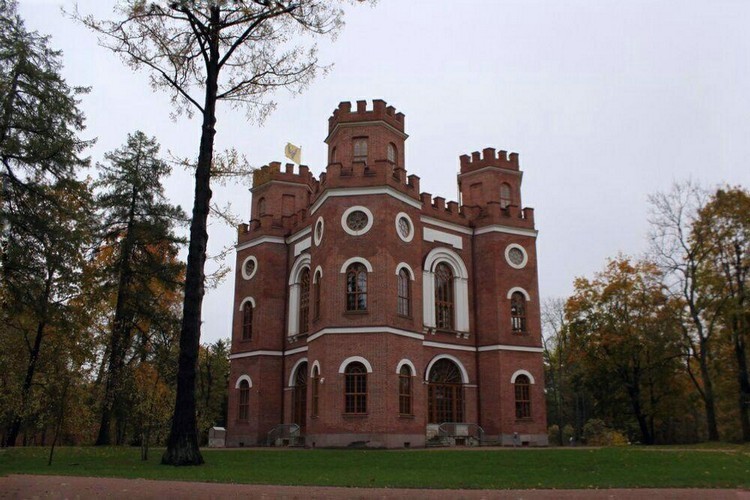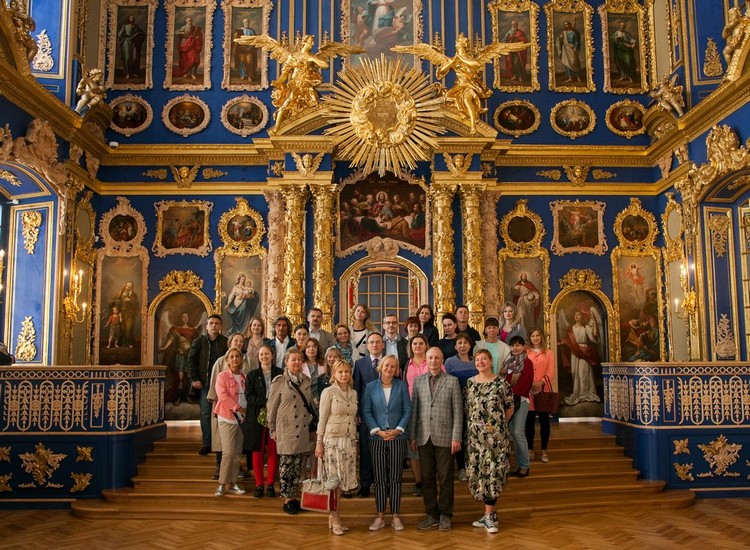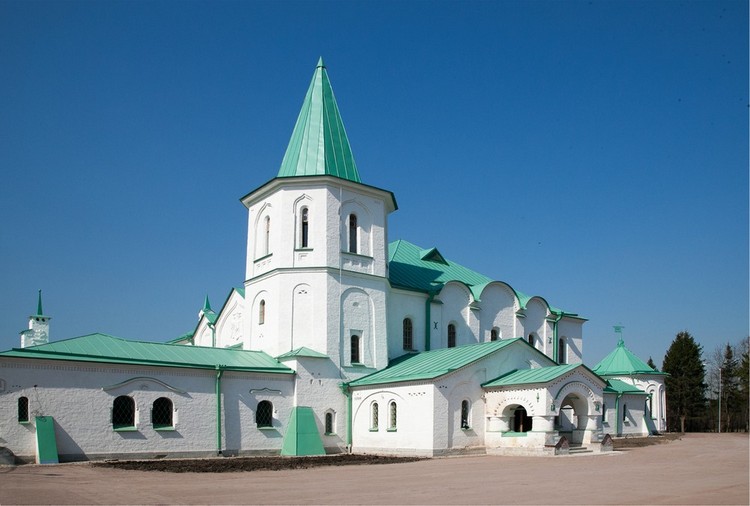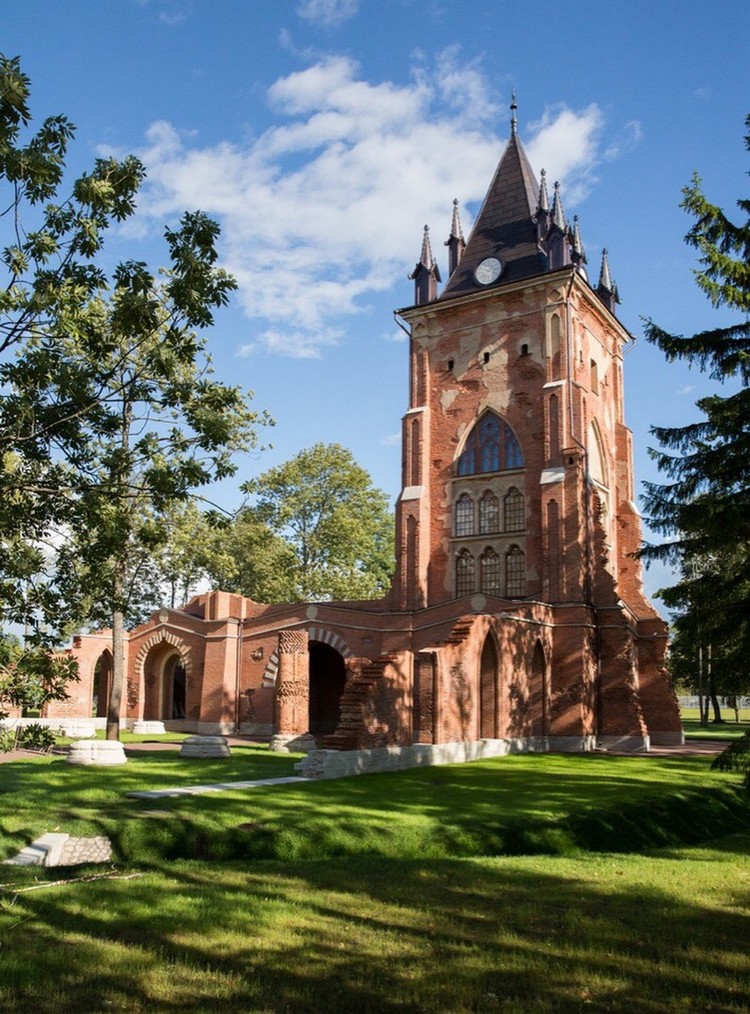Maria Ryadova: “Restoration lends wings”
M.N. Ryadova
The Tsarskoye Selo Museum Reserve is one of the most famous in the world; partly, this is so thanks to the “eighth wonder of the world,” namely, the Amber Room. Today we are talking with a person who was lucky not only to contribute to preservation of the amazing beauty of palaces and parks, but also to add to these riches. This is the Chief Architect of the Tsarskoye Selo State Museum, a SPbGASU graduate Maria Ryadova.
- Maria, when did you decide to become an architect-restorer?
- I didn’t even have to consider the matter. I graduated from the architectural class of School 564 and studied at an art school. In the eleventh grade, I realized that I wanted to connect my professional career with restoration. It was far from easy to enroll to SPbGASU to this speciality. First, I studied at the Faculty of Civil Engineering at the Department of Restoration and Reconstruction of Architectural Heritage and graduated as a Restorer Engineer; and in 2017, I graduated from the Master's degree program at the Faculty of Architecture majoring as Architect Restorer.
– What people and events influenced you while studying at the university?
- First of all, this was my graduate supervisor Valeria V. Morozova. For all my classmates, she became a very dear and significant person; we all are staying in touch with her. Our university has an essential feature: if a student wants to gain knowledge, there is a way to get it. Moreover, professionals of the top level work here. Vasily S. Goryunov, one of the most famous researchers of the architecture of St. Petersburg, lectured to us not only in classrooms. We walked around the city and “in reality” got acquainted with architectural masterpieces and the urban environment that forms them. Thanks to Sergey V. Sementsov, one of the founders of the environmental and urban planning protection principles, we were aware of innovative trends in the protection of monuments, which later on were adopted at the legislative level.
Practical exercises, specific measurements, field trips to architectural monuments and buildings under construction were imperative. At lectures on restoration technology, the teachers tell you about the stages of work, but until you come to the site, you can’t perceive all details and nuances.
The Chapelle Pavilion. Installation of punctured decoration. Photo by R. Shamukov
The course was a full study of structures (wooden, metal, reinforced concrete) for two - two and a half years. The task of restoration is to preserve historical objects as much as possible, to ensure their bearing capacity. Therefore, the more knowledge you have, the more design options you can offer, the easier it is to make the right decision. Indeed, often monuments are in poor or emergency condition..
- How was your career developing?
- At the fifth year of university srudies, I joined the Lenproject Restoration Institute. This is one of the city’s oldest design organizations. I worked in the technical department, which was headed by Alexander Eu. Serov. My first object was the Kazan Cathedral, where I was engaged in a technical examination of the roof and roofing system. Later, this became the topic of my thesis. The chairman of the examination committee was Olga V. Taratynova, who then was the first deputy chairman of the KGIOP. After a while, I was invited to work there in the division of suburban districts. I monitored the protection of Pushkin and Pavlovsk facilities. And thus, as it turns out, the loop got closed: for nearly ten years, I have been working in the Tsarskoye Selo Museum Reserve.
✔ Later on, I was transferred to the division of the Central District to oversee the restoration of the Kazan Cathedral, Noble Assembly (the Philharmonic Hall), Ciniselli Circus, Mikhailovsky Theater and eighty other objects. Working at KGIOP could also be considered as studying at university: the traditions of the St. Petersburg school of restoration are handed down here.
In 2011, Olga V. Taratynova offered me the position of the head of the design and estimate department of the Tsarskoye Selo SMR; later on, I became the chief architect of the museum.
– What design projects in Tsarskoye Selo have been and are being implemented under your leadership?
- Since 2010, the main vector of the museum’s development has been aimed at restoring the Alexander Park and its facilities. The most important thing is the restoration and adaptation of the Alexander Palace. We started this process nine years ago; the works are still in progress. This summer, we are going to open the first eight interiors of the private residence of Nicholas II and Alexandra Fyodorovna.
Among the completed objects are the White Tower, Arsenal, and Chapelle pavilions in the Alexander Park. The most interesting, in my opinion, are the Agate rooms and the Church of the Resurrection of Christ in the Catherine Palace: the authentic decoration of the 18th century has been preserved here. That’s why we could apply conservation techniques. In my view, these interiors are the eighth wonder of the world.
✔ Agate rooms, the apartments of Empress Catherine II, have preserved the genuine historical decoration to this day. They are unique both artistically and technically and have no analogues not only in Russia but also in the world.
We opened the palace church to visitors last April. A large-scale restoration of this architectural masterpiece of the 18th century, created by the project of Francesco Rastrelli, took four years. The work was performed by the Tsarskoye Selo Amber Workshop, whose specialists restored the Amber Room and the Agate Rooms.
350 experts revived the historical interiors: gilders, sculptors, carvers, painters. The church, enclosed by multi-tiered scaffolding, turned into a huge restoration workshop for the entire duration of the work. For the masters, working with the rich gilded interior decoration was tough and challenging. More than a hundred professional gilders were bringing back the former luxury and splendor to the numerous figures of angels, intricate details and flower garlands. In the postwar years, more than 2.5 thousand fragments of church decor were collected. Lost fragments are recreated in wood, without gilding and tinting. Thanks to this technique, the visitor can distinguish historical elements from new ones.
The restoration of the church was accompanied by interesting findings and discoveries. In the altar part, restorers found neatly folded details of the church’s gilded décor, 182 fragments of those behind the paneling of the iconostasis. Most likely, in the post-war years, museum staff did this in the hope that they would begin to revive the interior sooner or later. The craftsmen carried out painstaking work to identify these details in order to trace down their historical location. Of the 54 fragments of gilt carving they put together a leaf of the Royal Gates. A joyful event was the discovery in the "buried treasure" of two angels that adorned the altar canopy.
{gallery name="Рядова 042020"}
In 2014, after a large-scale restoration, we opened the only in modern Russia museum of World War I in the building of the Sovereign’s Warrior Chamber.
But the work of the chief architect is not only ceremonial interiors and palace facades; it also embraces engineering networks, transformer substations, boiler rooms, all that visitors most often do not notice or aren’t aware of. This is probably one of the most difficult aspects of my job. However, experience has proven that one can learn everything.
– What would you like to wish to those who are studying at SPbGASU today?
- To remember that lectures and seminars are essential but there's always student life. If not for my Iskra construction team, I would never have been to Norilsk. Do participate in public life, go with construction teams. Do not worry; as a result, you will overpass everything! The main thing is not to lose your inner confidence and the starve for knowledge. And I urge everyone, let's go to Tsarskoye Selo!
Text: Elena Shulgina
✔ Learn more about the enrollment to the university







